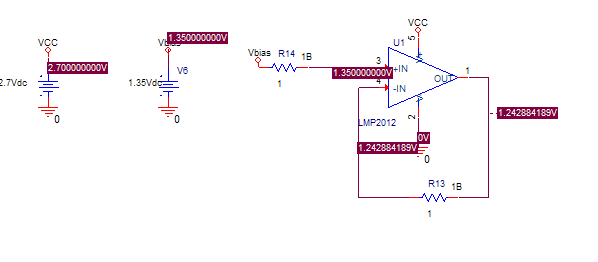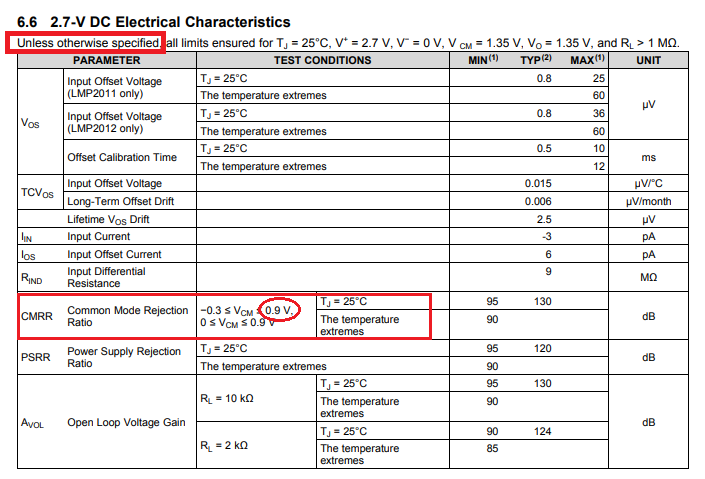Other Parts Discussed in Thread: TINA-TI, LMP2011, LMP2012, OPA191, LMP2021, , LMP2012QML
Tool/software: TINA-TI or Spice Models
I does not seem the LMP2011 Pspice model is valid as simulation does not agree with datasheet.
The datasheet specs gain and phase margins at 2.7V with Vcm=1.35V. However opamp model fails to simulate properly at this bias voltage see below. (output is not same as input in voltage follower unity gain config and if I evaluate gain and phase margins at this bias I get garbage with gain down to -160dB at 1Hz )
If previous advice that device cannot be operated above Vcm=VDD-1.8V then how can datasheet specify phase and again margins there.
We also have tested devices at 3.3V supply at Vcm=1.65V that operate properly but simulation model also fails there.
If Vcm is made lower (<<VDD/2) the simulation model works but phase margin is somehwhat worse than spec. More like 8.8dB,42deg.
Do you have a better Pspice model that agrees better with datasheet and actual parts?
Mike




